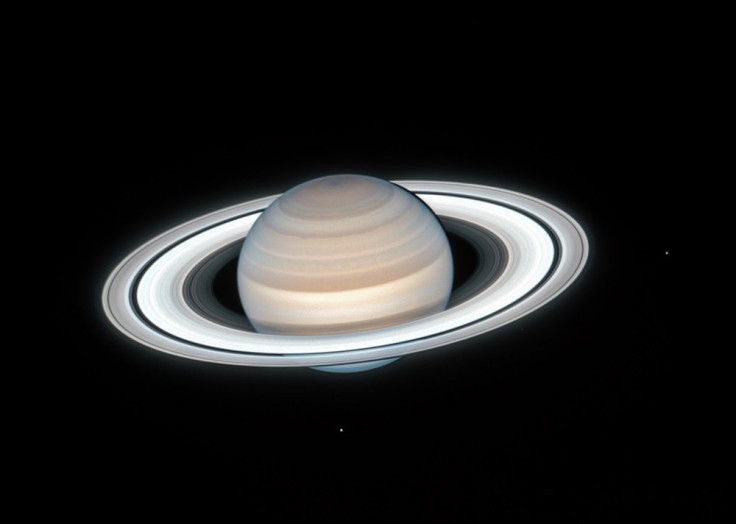LOOK: Hubble Snaps Stunning New Photo Of Saturn

KEY POINTS
- NASA's Hubble Space Telescope took a stunning new photo of Saturn on July 4
- The image was taken during summertime in Saturn's northern hemisphere
- The new photo highlights several features of the planet, including its rings and moons
NASA's Hubble Space Telescope captured a new photo of Saturn earlier this month. The stunning image detailed several features of the planet, including its iconic rings.
On July 4, Hubble snapped its latest image of Saturn during summertime in the distant planet's northern hemisphere, when the Earth gets its best view of the gas giant. Astronomers take the opportunity to aim Hubble at Saturn to get a good look.
In the image, Saturn's unique rings are visable in stunning detail, while two of its many moons, Mimas and Enceladus, can be clearly seen at the planet’s right and bottom, respectively.
The image also captured features on the planet such as small atmospheric storms, colored bands and a reddish haze over the northern hemisphere. According to NASA, such features tend to change with every viewing of Saturn, with the atmospheric storms coming and going while the bands tend to change in color “from year to year.”
As for the reddish haze over the northern hemisphere, the agency explains that it could be a result of increased summertime sunlight.
"This may be due to heating from increased sunlight, which could either change the atmospheric circulation or perhaps remove ices from aerosols in the atmosphere," NASA said in a news release. "Another theory is that the increased sunlight in the summer months is changing the amounts of photochemical haze produced."
The image also highlights Saturn's stunning rings that make it perhaps the most recognizable planet in the solar system. However, it remains unclear whether the rings emerged at the same time as the planet or if it is a much younger feature that possibly only formed during the time of the dinosaurs on Earth.
"Just how and when the rings formed remains one of our solar system's biggest mysteries," NASA said.
The new image of what NASA calls the "lord of the rings" was taken when it was 839 million miles away from the Earth. The distance constantly changes due to their divergent orbits, but they can be as close as 746 million miles to as far as 1 billion miles away from one other.
To date, only a few missions have made the voyage to observe Saturn, including Pioneer 11 as well as Voyagers 1 and 2.
© Copyright IBTimes 2025. All rights reserved.






















